What types of personalities are there and how to determine your psychotype?

Even the most reserved people engaged in a purely technical sphere are forced to constantly contact with someone. And they need up-to-date knowledge from the field of scientific psychology about which personalities they may meet. Such information is even more important for managers, for employees of personnel departments, and security services of enterprises.

The definition of personality in psychology
One of the first researchers who seriously approached the establishment of a typology of personality was the famous Karl Gustav Jung. It was he who noticed that the discrepancies between the predictions of psychological theories and real practice are connected precisely with the characteristics of specific people. The famous psychiatrist and theorist of psychological research proceeded from the fact that there are so-called archetypes, that is, elements of the collective unconscious, cultural inborn structures. Jung believed that the prototypes are hidden in the deepest layers of the unconscious, far beyond what is usually considered a person. He argued that men have separate "female" archetypes, and women, respectively, have "male" archetypes.
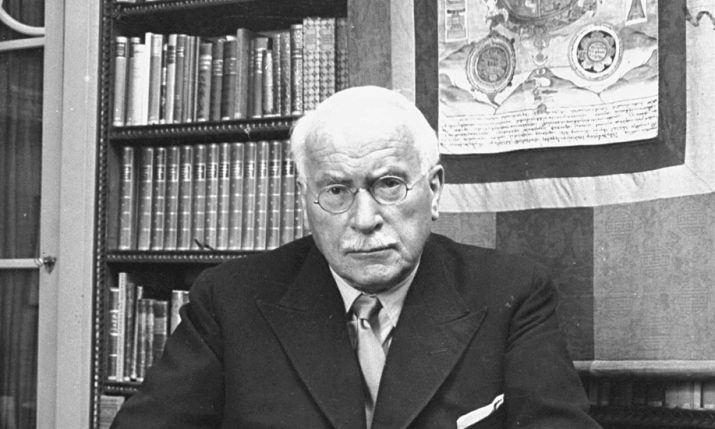
But in addition to a general definition of the structure of personality, Jung introduced his own classification of it.
Just this specialist suggested dividing into extroverts and introverts. The former are focused on interaction with the outside world, and the latter on purely internal experiences.Contrary to popular belief, an outstanding psychologist did not directly connect these statuses and the level of sociability. The extrovert, according to Jung, is rather weakly controlling the internal mental processes, simply because he pays little attention to them.
Such a person for the most part tries to change external circumstances, and not his attitude to them. For extroverts, the priority of the collective and holistic over the individual beginning and particular moments is typical. Introverts concentrate on internal mental processes. They like to contemplate their thoughts and analyze experiences, motives, and correct mistakes. But one should not assume that the introvert is always selfish - special studies have shown the incorrectness of such a judgment.
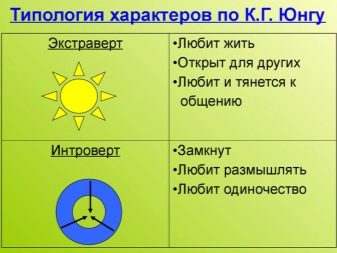
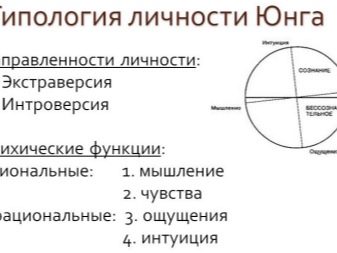
Jung did not only classify extroversion and introversion. He divided people into rational and irrational types. The point is not whether the external or internal moments play the main role, but how they are conceptualized. A rational person has a clearly articulated approach, which can vary depending on the situation, but very slowly and only under compelling circumstances. Such a person is prudent and cautious, most often acts sequentially, in a clear pattern.
The irrational part of people is characterized by increased sensitivity, reacts to everything emotionally. This reaction is often ahead of rational understanding and even interferes with it. Reasonable arguments affect such personalities very weakly, but sympathies and antipathies strongly influence. Jung also took into account personality traits such as sensation and intuition. But his system of classifying people is not the only one that is used in practice - there are more common approaches.


4 psycho-temperament
The most common option for classifying personality types is the allocation of 4 temperaments. So they call the system of human properties, which are largely physiologically determined and are expressed in psychological processes and phenomena. Only with great difficulty and for a short time does one manage to consciously behave differently from temperament. Over a long period of time, it will still burst to the surface.
Temperament is laid at the genetic level.

Sanguine
This human type easily comes into contact with children and is characterized by cheerfulness. It is not difficult for sanguine people to switch from one area of activity to another, to adapt to a non-standard environment for themselves. Usually such people speak loudly and quickly, facial expressions and gestures clearly express the emotions experienced. Sanguine people urgently need something new and fresh all the time, then they still have an interest in the surrounding life. It is precisely at such moments that people of this temperament are perceived by others as active, active, capable of "turning mountains".
But everything changes when sanguine people have to do long, monotonous work. Then interest in the business quickly wanes, gives way to indifference and lethargy. Only very disciplined or rigidly placed sanguines do not show boredom explicitly. The emotions of such people do not differ in particular depth, they can be replaced by the opposite mood in a very short time. Nevertheless, a positive attitude dominates.


Choleric
Like representatives of the sanguine type, these people are characterized by increased activity and sociability. But there is a serious difference between them. Choleric are even less balanced than sanguine, they are characterized by increased excitability and short temper. Where some are restrained, others are impetuous and easily irritated. Gestures are harsh, and by facial expressions even non-specialists can easily guess what emotions are really being experienced.

Choleric people can take up work, for another matter with the greatest enthusiasm, make a lot of effort.Serious difficulties are unlikely to stop them like that. However, it must be borne in mind that with choleric temperament, the supply of nerve forces can quickly and suddenly deplete. Sometimes a plan is left halfway, or at least dramatically changed approach, attract new assistants. When dealing with others, it is difficult for choleric people to behave correctly, to restrain irritation if something does not suit them.
With such a temperament, it is extremely difficult to approach others around objectively. In the case of any misconduct, violation of obligations, even the smallest, they often break down, sever relations. It’s hard to communicate with choleric people. It is difficult for them to admit the fallacy of the decision made and to “win back”.
People themselves need to restrain themselves, while others need to be more tolerant of them.

Phlegmatic person
A feature of this human character is slowness and poise. In all actions, calm and thoughtfulness is revealed. Once they try to bring the matter they have begun to their logical conclusion, even if they have to make a lot of efforts and overcome difficulties. But one must understand that such success is achieved somewhat more slowly than in people with other temperaments. The emotions of phlegmatic people are weakly expressed, it is rather difficult to recognize them.
Their sociability is moderate: talking to anyone is easy, but there is no particularly urgent need for communication. The mood changes slowly, usually set immediately for the whole day. Very serious events must happen so that it changes quickly. Exposure and composure in the most difficult situations is a strong feature of phlegmatic people. However, they also have problems: often the behavior is sluggish and inert, many things develop an indifferent attitude.

Melancholic
The last of the four temperaments, like phlegmatic, is characterized by a slowed-down course of mental processes. It can be extremely difficult to interest melancholic people in anything, to motivate them to engage in vigorous activity, especially associated with great efforts and losses. Emotions develop gradually, but can reach great depths. To offend, offend melancholic is very easy (although external manifestations are weak).
Such people:
- often close in themselves;
- with difficulty master a completely new and unusual;
- able to act effectively if the environment is well developed.

In ancient times, the principles of distinguishing types of temperament were fantastic: they were associated with the predominance of certain fluids in the body. Only in the nineteenth and twentieth centuries did it become possible to determine such human characteristics as manifestations of one or another type of nervous system. Thanks to the research of I.P. Pavlov, it was found that the main factor affecting temperament is how strong the nervous system is. Also take into account the speed of the change of excitation and inhibition.
According to Pavlov, there are 4 varieties of the nervous system:
- weak (both excitement and inhibition are slowed down) - these are melancholy;
- severe (easily irritated, moderately severely inhibited) - choleric;
- strong balanced - sanguine;
- strong balanced with a slowed-down course of mental processes - phlegmatic.
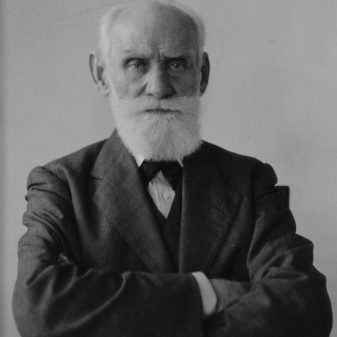
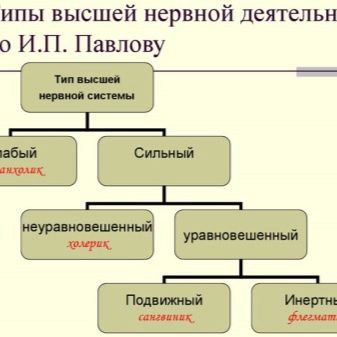
Such a characteristic as force also has a completely material nature.
She expresses the willingness of nerve cells to work in a tense regime for some time without the need for rest. It is generally accepted that the stronger the nervous system, the higher the person’s resistance to stress. If this power is great, people can act almost without problems even in adverse and unpredictable conditions. They can regain strength in a short time, then return to their previous occupation without much difficulty.
All types of psyche, including unstable, can be recognized by external signs and features of behavior. So, sanguine people for the most part:
- medium or lower growth;
- distinguished by a wide bone;
- are overweight;
- have a slightly rounded forehead.
Phlegmatic outwardly usually heroic physique, slow and reasonable, have a square or rectangular body. Such people go confidently and calmly. Phlegmatic bodies are dense and massive. Of the negative properties, one can note a tendency to obesity. Extremities of small or medium length.


Cholerices are constantly moving, with difficulty sitting in place. Outwardly, they look like fragile and thin people with a pointed chin. The cheekbones of choleric patients are also sharpened. The tip of the nose is located below its base. The very shape of the nose is very clear, well recognized from afar.
The face of the melancholic is subtle; if there is no particular reason for joy, one can easily catch a strong longing in one's eyes. A typical melancholic is thin, has relatively thin and elongated bones, muscles. The pelvis is wide, but the waist is narrow. Another pronounced feature is the acute angle formed by the ribs. All these regularities are statistically deduced, therefore, judgments about the temperament of a person by his external appearance are often erroneous.

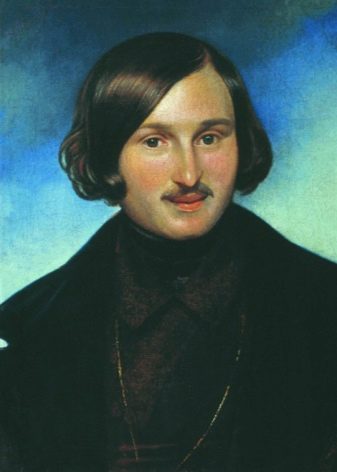
It should be borne in mind that in the "pure form" described temperaments are extremely rare.
Trained psychologists take into account in their classification a number of basic properties:
- sensitivity;
- severity of reaction;
- ability to change;
- inertia level.
Professionals also believe that leadership characteristics can appear in representatives of any temperament. It depends on what type of tasks it is necessary to solve, how global it is, whether novelty or routine moments prevail. Opinion about melancholy as loafers is little understood. Often they ponder, simply without showing emotion.
Hysterical antics can happen to everyone, even to those who are usually considered a calm and cold-blooded person; creativity also does not have a rigid attachment to temperament.


16 socionistic types
In addition to temperaments, there is also a division into groups distinguished by socionics. Specialists in it focus on three points:
- perception of incoming information;
- features of its processing;
- the specifics of interaction with the external environment.
Socionistic psychological types are named brightly and figuratively. So, Dostoevsky distinguished by good upbringing and tact, compassion for those who are weaker. They know how to understand the characteristics of other people, very quickly and easily evaluate who, with whom and in what relationship. Don Quixotes behave irrationally, easily breaking established patterns. Such a person in any situation discovers several modes of action and quickly makes the right decision.
Don Quixote able to see the hidden potential in every little thing. They skillfully use any weakness of the opponent, and any valuable property of the subject, and a favorable chance, provided even for a short while. The sociotype "Yesenin" is characterized by the ability to feel, even in many ways intuitively, the most convenient moment for this or that step. “Yesenin” is easier than other people to predict the further development of events.

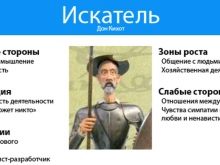
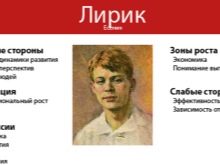
Sociotype "Stirlitz" It is remarkable in that it can act both offline and as an organizer equally effectively. Such people are also characterized by the ability to carry out their work in the most comfortable way, even in an unfavorable, anxious environment.
Sociotype "Jack London" characterizes a person who treats everything pragmatically, from the point of view of profit or damage. Any information, any person encountered on a life journey, free time and so on - all this is evaluated as a resource for achieving a goal or as a hindrance in solving a task. But “Hamlet” is sharply emotional, can catch even the weak emotions of other people; this ability can be used to push in the right direction.
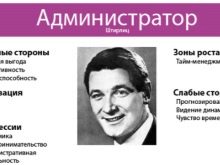
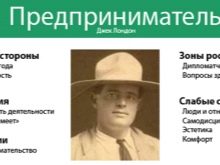

Robespiers have three properties:
- strict punctuality;
- responsibility to oneself and others;
- craving for justice.
If a person puts personal comfort and harmony in the surrounding space in the first place, then this Gabin. Representatives of this sociotype feel good in a calm, orderly atmosphere, but conquering new heights, exploring previously unknown to them is hardly suitable. So-called Balzac immediately reveals problems and shortcomings where others do not notice them. But it is this property that can cause a person many problems.
Often his statements are evaluated as cynical, rude, and he himself - as an unreasonable pessimist.


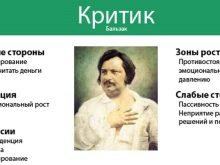
A type Huxley may also notice what is hidden from other people, but we are talking about implicit possibilities. Ethical considerations are more valuable to them than logical constructions. Often, "Huxley" puts forward frankly fantastic ideas and ideas. Curiosity is characteristic of them. The memory is usually very strong.
"Maxim Gorky" - The clear opposite of Huxley. Such a person puts logic in the first place. No wonder: he knows how to recognize a causal relationship like no other. Rational thinking dominates in every respect. But Dreiser - something in between. For such people, logic is important, but they try to follow strict moral principles, and if they notice a departure from them, they criticize him immediately.
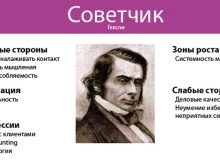
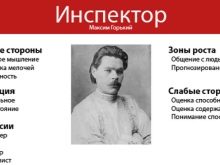

A type Dumas - This is an introvert who prefers to consider the world around him subjectively. They need a comfortable atmosphere in any case. The more harmonious the environment, the better. The sociotype "Napoleon" is fully consistent with the characteristics of the famous commander. He is characterized by a strong will, perseverance in achieving his goal and the ability to go towards it, even if the situation is unfavorable.
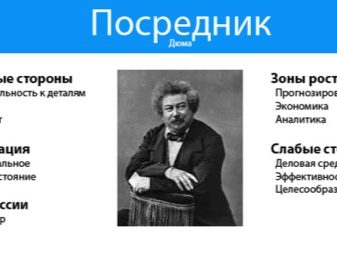
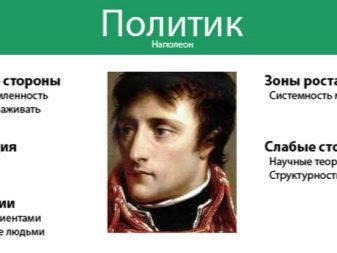
And here is the type "Zhukov" highlighted incorrectly, on the basis of a black myth, hardly having a real historical foundation. So in socionics excessively selfish people are called. Feature - the desire to achieve the task at any cost and strictly at a certain moment.
Finally, it is worth saying about the psychotype Hugo, which is characterized by cheerfulness and energy. Such people are invariably positive even in small things, pleasant in communication.
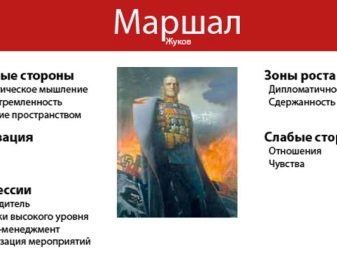
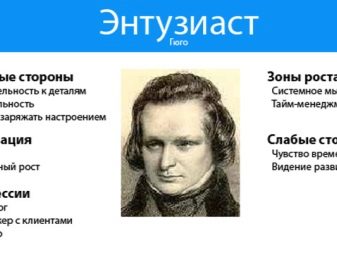
People in conflict situations
But no matter what the gradation of personalities is considered, all the properties described above are manifested only in a normal working and everyday environment. And sooner or later, any person has to participate in various conflicts. Behavior in this situation also allows you to classify people. The concept of Obozov gained a certain distribution. The so-called "practices" always try to attack in order to defend more effectively.
If they are involved in a conflict, then that is more often delayed and aggravated. This is due to the fact that the practitioner always tries to adjust the position of others in a way that is desirable for himself. Small skirmishes are perceived by them superficially, as something insignificant. Therefore, the relationship after a quarrel can be broken up to the final disagreement.

The exact opposite of the practices are "interlocutors."
These people are trying to the last to maintain good relations and fully communicate. For the sake of this goal, they are even ready to sacrifice part of their own comfort or positions, not to take advantage of certain advantages during the conflict. Arguments in the dispute are selected carefully, trying to avoid sharp lunges and transitions to the individual. The Interlocutor immediately notices who thinks how. He is ready to accept the opinion of another person and even cooperate with those who think in a fundamentally different way.
The third type, according to Obozov, is the "thinker." Such a person tries to have a clear idea about himself, about other people and about the outside world. When a thinker is involved in a conflict, he does not seek to respond first or under the influence of emotions.On the contrary, carefully constructs a system of argumentation, trying to make it logically impeccable and invulnerable to criticism. Cautiousness to thinkers is less characteristic than interlocutors.

Demonstrative
Along with the three-link convoy system, there is a division of conflicting people into four types. A demonstrative person always strives to be in the center of universal attention. For him, the subjective opinion of others is very important. The demonstrator is able to adapt to a changing environment. Due to the nature of behavior, it often provokes the onset of clashes, although it may not be aware or deny it.

Regid
Such people are characterized by suspicion and excessively high self-esteem. If one's own significance is not confirmed in one way or another, "the day will be spent in vain." A rigid person is inclined to go to his goal to the end, not taking into account the changed situation. Moreover, the needs and sufferings of other people are of little importance to him. If some act or inaction at a certain moment helps to achieve the goal, rigid people will hardly agree to recognize this as incorrect, to revise their assessments.

Unmanaged
Representatives of this type are distinguished by impulsiveness and weak self-control. Even they themselves cannot always predict how they will behave after a while or in certain circumstances. Norms and decency for such a person are relevant only to the extent that a violation of them entails conviction and sanctions. Sometimes, however, even the likelihood of severe punishment for a particular act does not stop them.
An uncontrollable person prefers to blame others and external circumstances, even in cases where his guilt is completely obvious.

High precision
For the bosses, such a subtype's sociotype is attractive due to scrupulousness in work and increased demands on itself. But at the same time, everyone with whom such a person interacts is quickly aware of his pickiness, even by unnecessary nuances. An over-accurate personality is also characterized by anxiety, a constant fear that something will go wrong. In the event of any failure, accusations and self-accusations, searches of disturbing people or provocateurs begin. Probable nervous breakdowns or even psychosomatic disorders on this basis.

How to determine your psychological affiliation?
To begin with, you should realize that all of the above is largely arbitrary. Absolutely identical people do not exist, and even the properties of temperament or character can change over time. The first step in determining psychological affiliation is self-observation. When analyzing actions, you need to pay attention to:
- propensity to participate in conflicts;
- a strategy with such participation;
- preferred type of activity;
- speed of decision making;
- sharpness of judgment;
- ability to change one’s opinion or lack of such ability.
See how to determine the personality type in the next video.









